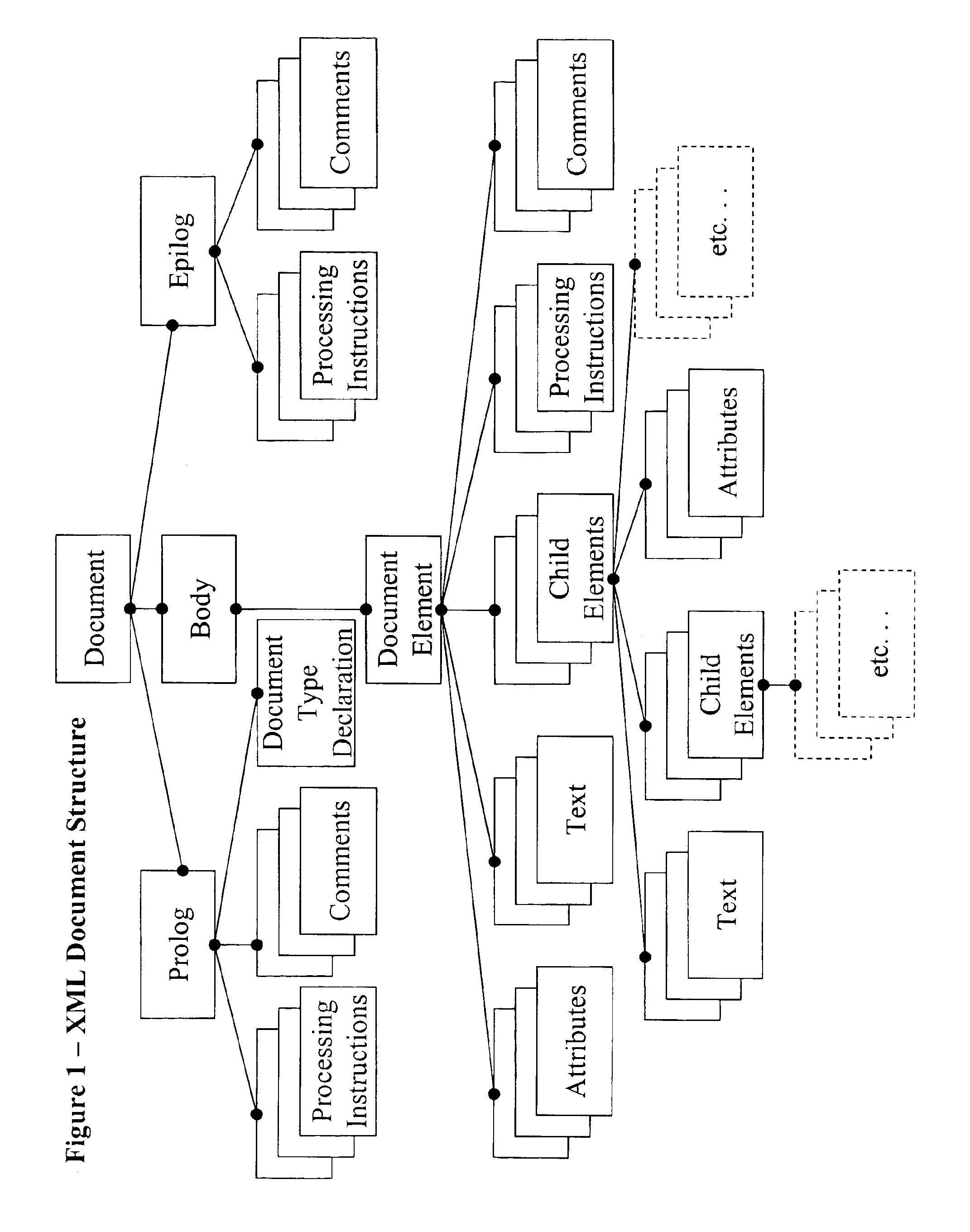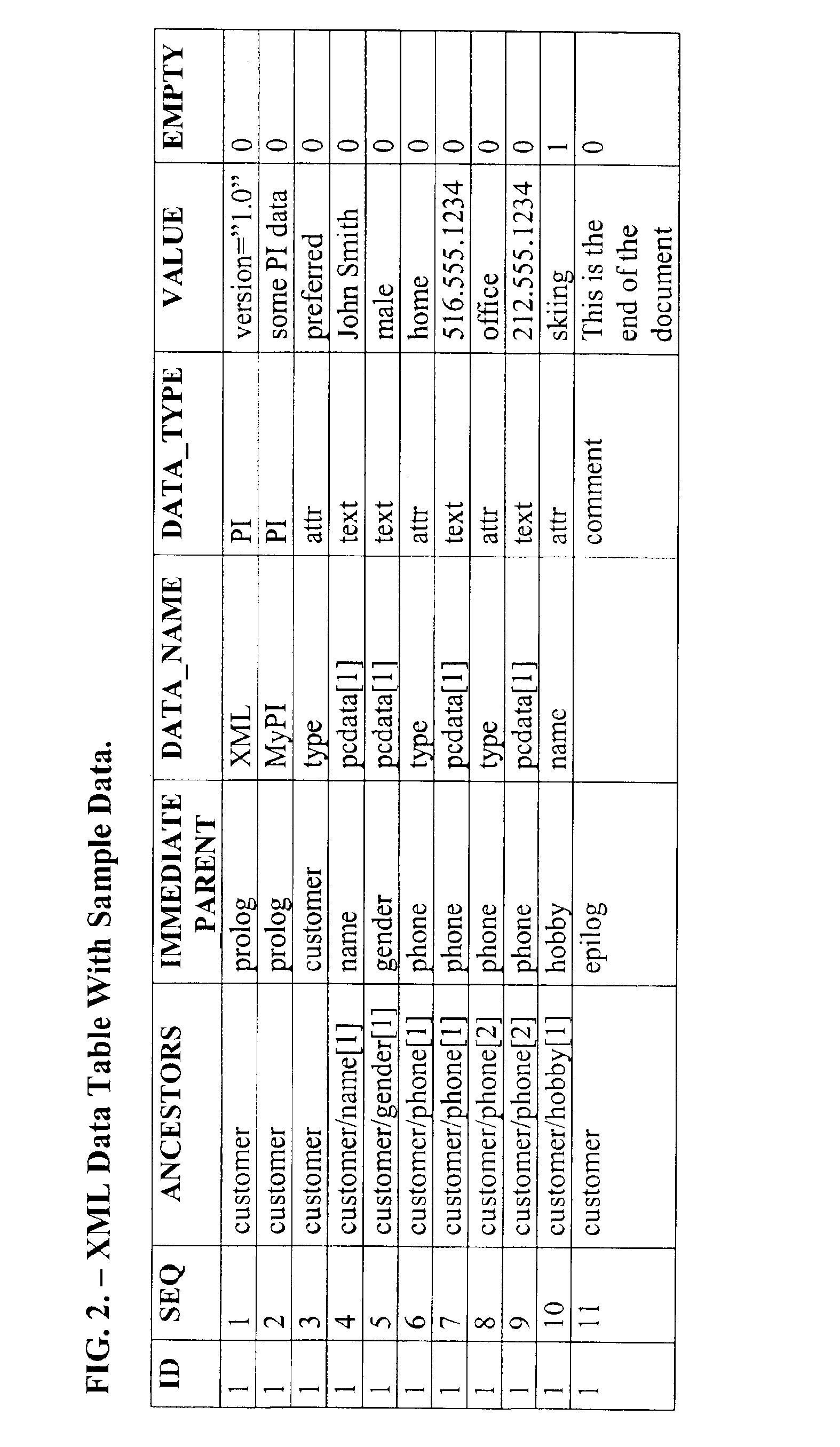System and method for converting an XML data structure into a relational database
a technology of relational database and data structure, applied in relational database, data processing applications, instruments, etc., can solve the problems of increasing the time it takes to write and test software, complex representation of objects, and complicated relational data models
- Summary
- Abstract
- Description
- Claims
- Application Information
AI Technical Summary
Problems solved by technology
Method used
Image
Examples
Embodiment Construction
[0024]The present invention provides system and method for converting between an XML data structure and a relational database.
[0025]FIG. 1 is a graphical depiction of an XML document structure. One way in which XML document data can be represented is as an in-memory XML document tree. What this means is that the data is stored in memory with all of the parent-child relationships intact.
[0026]A programming model that supports an in-memory representation such as the one depicted in FIG. 1, would provide methods to traverse the hierarchy of the tree programmatically. Conventional methods exist in the form of Document Object Models (DOM). The W3C defines a standard DOM for XML processing (www.w3c.org / DOM which is incorporated herein by reference as if fully set forth). In addition, there exist variations on the W3C DOM, such as JDOM™ (described at www.jdom.org which is incorporated herein by reference as if fully set forth), which is another in-memory XML processing model geared towards...
PUM
 Login to View More
Login to View More Abstract
Description
Claims
Application Information
 Login to View More
Login to View More - R&D
- Intellectual Property
- Life Sciences
- Materials
- Tech Scout
- Unparalleled Data Quality
- Higher Quality Content
- 60% Fewer Hallucinations
Browse by: Latest US Patents, China's latest patents, Technical Efficacy Thesaurus, Application Domain, Technology Topic, Popular Technical Reports.
© 2025 PatSnap. All rights reserved.Legal|Privacy policy|Modern Slavery Act Transparency Statement|Sitemap|About US| Contact US: help@patsnap.com



